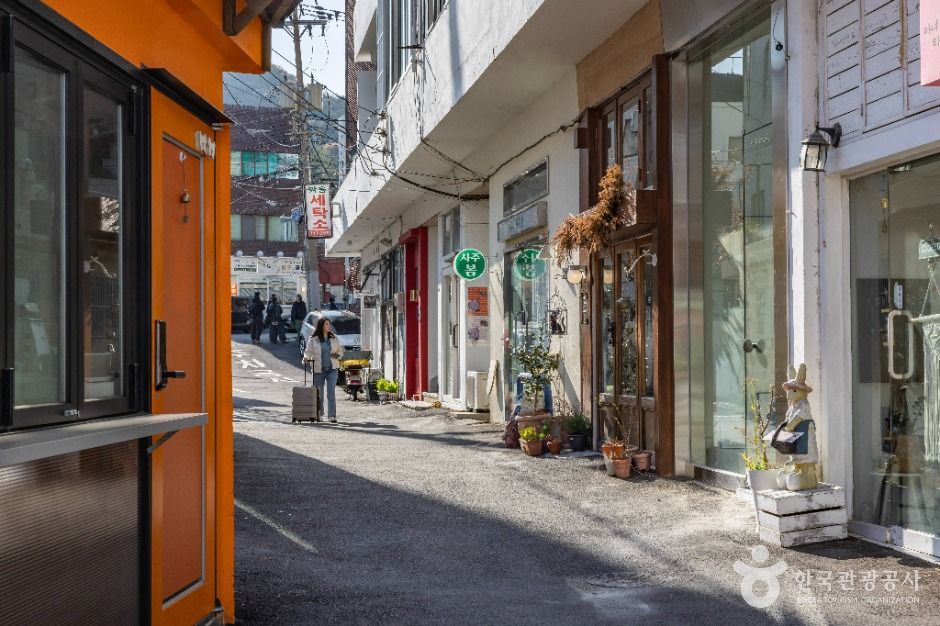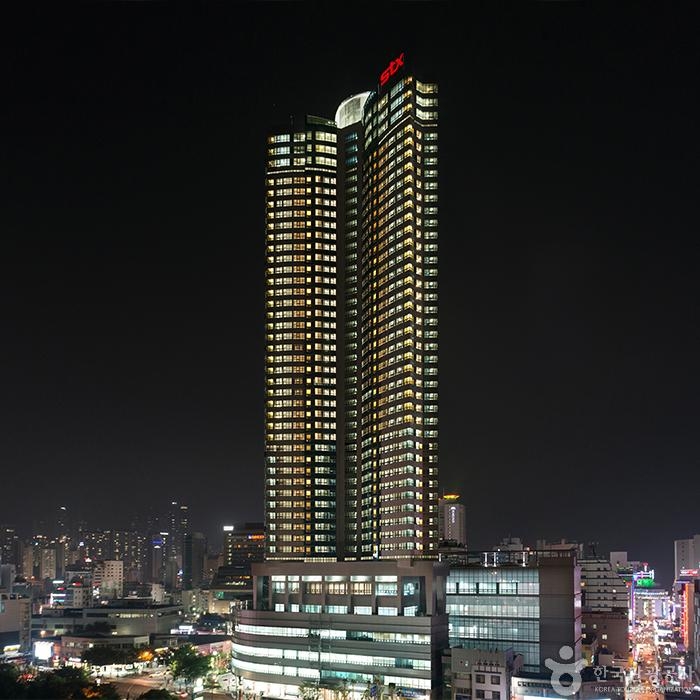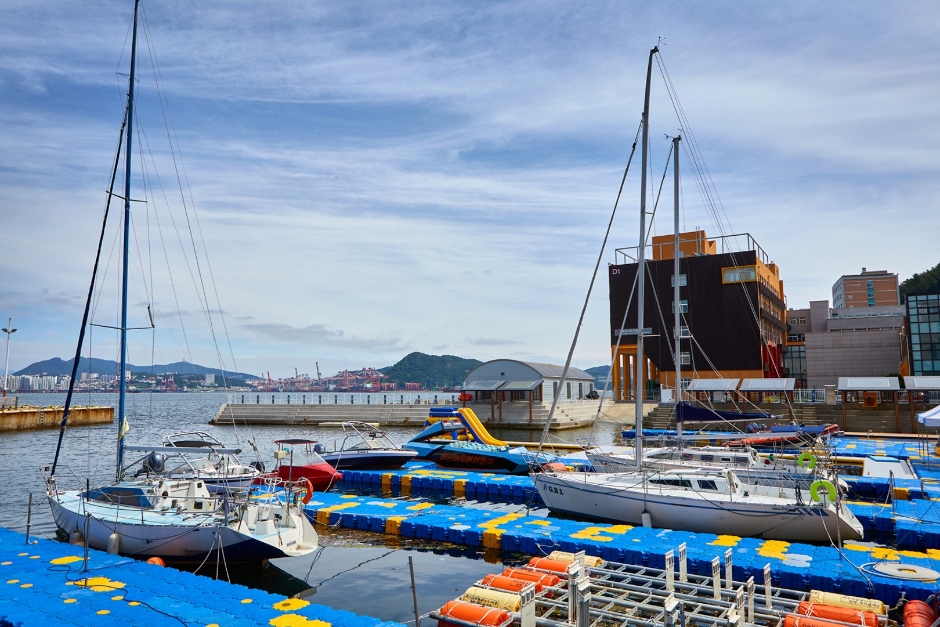ABC-Mart - Pusan Nat’l Univ. Station Branch [Tax Refund Shop] (ABC마트 부산대역점)
8.9Km 2024-04-18
28-1, Busandaehak-ro, Geumjeong-gu, Busan
-
Kosin University Gospel Hospital (고신대학교복음병원)
9.0Km 2025-10-23
262 Gamcheon-ro, Seo-gu, Busan
Kosin University Gospel Hospital practices the love of Jesus Christ by providing patient-centered care, spreading the gospel, and training medical students.
We are committed to the health and well-being of our patients.
Founded as Gospel Clinic in Yeongdo, Busan, in 1951 during the Korean War, we opened the region's first cancer center in 1978. For over 70 years, we have provided distinguished medical services guided by Christian values.
We lead the region’s healthcare industry, guided by our core values: innovation and self-direction, recovery and future orientation, communication and mutual trust, and love and goodness. As a tertiary hospital at the top of the healthcare delivery system, we treat severe diseases at our cancer center founded in 1978. We also opened the region's first advanced robotic surgery training center, inspired by Dr. Jang Gi-ryeo, to train both Korean and international medical professionals. Additionally, we are committed to innovative treatments by introducing AI-based medical technologies, aligning with the 4th Industrial Revolution.
ER NC Department Store - Busan Branch [Tax Refund Shop] (ER NC백화점 부산대)
9.0Km 2024-04-23
2, Busandaehak-ro 63beon-gil, Geumjeong-gu, Busan
-
Haeridan Street (해리단길)
9.0Km 2025-08-11
Udong 1-ro, Haeundae-gu, Busan
Haeridan Street starts across from the old Haeundae Station and was named after the trendy Gyeongnidan Street in Seoul. The narrow street is lined with unique shops, cafes, and restaurants, making it a hot place among visitors to Haeundae.
Felix by STX (펠릭스바이STX)
9.0Km 2024-12-13
620 , Haeun-daero, Haeundae-gu, Busan
+82-51-969-5016
Felix by STX is a lifestyle hotel in Haeundae, Busan, operated by STX Service. It is connected to Exit 5 of Haeundae Subway Station, so it offers excellent accessibility and convenient transportation. The rooms are divided into studios and suites of various sizes. Every room includes amenities such as a kitchen for cooking, a table, a work desk, and a washing machine to ensure a comfortable stay for both business travelers and leisure travelers.
Ilpum Hanwoo (일품한우)
9.1Km 2024-10-15
49, Haeun-daero 570beon-gil, Haeundae-gu, Busan
+82-51-747-9900
Ilpum Hanwoo is a restaurant near Haeundae Beach serving hanu galbi (grilled Korean galbi). Its signature dish, sanggang kkotgalbi (grilled whole boneless galbi), is a choice cut sourced from top-grade hanu (Korean beef). It is offered in limited quantities. Other hanu gui (grilled Korean beef) menus all feature premium plum-fed beef for rich flavor and tender texture.
Kasina - Haeundae Branch [Tax Refund Shop] (카시나 해운대)
9.1Km 2024-04-19
#203, 257, Haeundaehaebyeon-ro, Haeundae-gu, Busan
-
Haeundae Special Tourist Zone (해운대 관광특구)
9.1Km 2021-03-05
Haeundae-gu, Busan
+82-51-749-5700
Haeundae Beach in Busan is famous both in Korea and abroad. Not only is it popular as the largest summer vacation spot, but it also attracts people even in spring, autumn and winter for its variety of festivals and events, such as the Busan International Film Festival, the International Yacht Race and the Haeundae Sunrise Festival. These festivals help keep Haeundae busy as a popular tourist site all year round.
With Haeundae Beach at its center, Haeundae Special Tourist Zone offers diverse marine leisure activities and fresh seafood. The zone has transformed itself from a typical vacation spot into a destination where one can stay long-term while enjoying leisure activities and cultural events. Today, the zone attracts an increasing number of tourists from around the globe.
The zone not only has natural resources, such as Haeundae Beach, Dongbaekseom Island, Dalmaji Hill and sea water hot springs, but also a convention center and IT complex. Well-equipped with cultural facilities, including movie sets, art galleries and aquariums, it is a qualified destination for MICE (Meeting, Incentive tour, Convention and Exhibition) tourists.
The coastal drive course is another way to enjoy Haeundae Beach. Moontan Road, offering a grand night view and various walking trails, including Galmaet-gil lying along the coastline, should not be missed as well.
The skyline at Haeundae underwent a dramatic change with the advent of Centum City. At night, the city skyline that is brilliantly illuminated by the high-end residential/commercial buildings captivates travelers. Inside Centum City are luxury apartments and a grand shopping complex, including a department store and a retail outlet.
* Current State of Haeundae Special Tourist Zone
1) Districts Covered: Areas around Jung, Songjeong, Jaesong and U-dong (Centum City), Haeundae-gu, Busan
2) Area: 6,225,000 ㎡
* Tourist Attractions
Haeundae and Songjeong Beach, Dongbaek Island, Oryukdo Island, Centum City, Aquarium, Haeundae Hot Springs, etc.
Marine Adventure Park (마린어드벤처파크)
9.1Km 2025-01-06
727 Taejong-ro, Yeongdo-gu, Busan
Marine Adventure Park is a park where visitors can enjoy thrilling marine sports on the blue sea of Busan. The jet boat, which sails the sea with 440 horsepower, is famous for its exhilarating speed and 360-degree turns. Moreover, round boats driven by jet skis and marble boats for four people constantly turn and shake the passengers off balance. Visitors can also enjoy SUP yoga on a stand-up paddle board on the sea. Packages consisting of two or three activities are cheaper than regular prices.
![ABC-Mart - Pusan Nat’l Univ. Station Branch [Tax Refund Shop] (ABC마트 부산대역점)](http://tong.visitkorea.or.kr/cms/resource/83/2890483_image2_1.jpg)

![ER NC Department Store - Busan Branch [Tax Refund Shop] (ER NC백화점 부산대)](http://tong.visitkorea.or.kr/cms/resource/25/2889325_image2_1.jpg)


![Kasina - Haeundae Branch [Tax Refund Shop] (카시나 해운대)](http://tong.visitkorea.or.kr/cms/resource/42/2885642_image2_1.jpg)


![Wata Plus [Tax Refund Shop] (와타플러스 해운대)](http://tong.visitkorea.or.kr/cms/resource/70/2885670_image2_1.jpg)
 English
English
 한국어
한국어 日本語
日本語 中文(简体)
中文(简体) Deutsch
Deutsch Français
Français Español
Español Русский
Русский